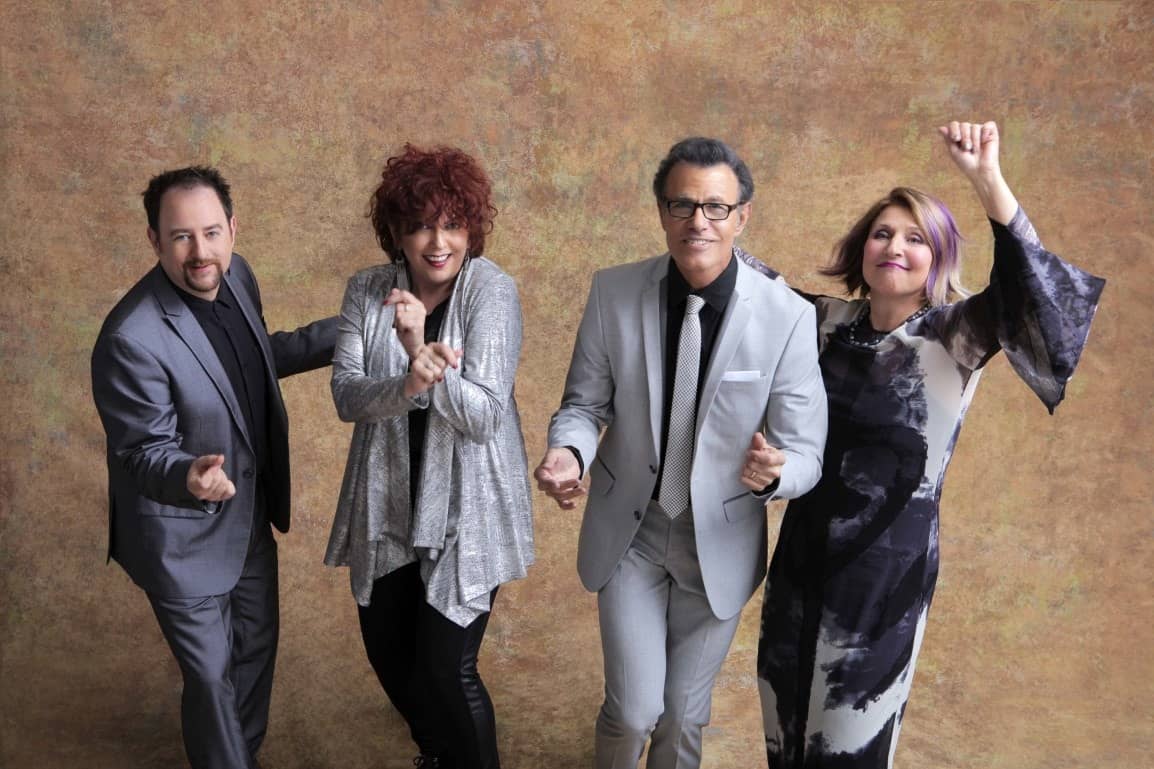The Manhattan Transfer still making a joyful noise, 50 years on

Four-part vocal harmony was considered archaic – pop music for Pop and Mom – when the Manhattan Transfer arrived in the early 1970s. Stylish and swinging, the group pushed boundaries and broke barriers with arrangements of jazz and big band standards (their first hit was a finger-poppin’ cover of Glenn Miller’s “Tuxedo Junction”).
Fifty years have come and gone since group founder Tim Hauser was joined by Janis Siegel and Alan Paul (Cheryl Bentyne replaced the original fourth in 1979).

The early days.
Never a mere nostalgia act, over those decades the Manhattan Transfer made significant deposits in the big music bank, covering straight ahead jazz (including the unique adaptation called vocalese), pop, rhythm ‘n’ blues, standards, a capella, swing and Latin.
The Manhattan Transfer raised the bar.
They’ll perform Saturday at the Central Park Performing Arts Center in Largo – a matinee at 4 p.m., an evening show at 8.
“I was 20 when this started, so it wasn’t nostalgia for me,” Janis Siegel tells the Catalyst. “I was responding to the music, only. It wasn’t me longing for another time.”
The group has 12 collective Grammy Awards, and was inducted into the Vocal Group Hall of Fame in 1998. One secret to their longevity is their restless nature, their reluctance to stick with one thing long enough to run it into the ground.
“It evolved because it was truly collaborative project,” says Siegel. “We’re a democracy, and everybody’s feedback and interests got absorbed into the concept of the group, gradually. We tried different things. We just wanted to sing four-part harmony in all these different styles, and explore these different facets of purely American music. The African diaspora in the United States. That’s what we were interested in.”
The Manhattan Transfer has performed in just about every country on the planet – music being the universal language and all.
Four-part harmony, she says, is “such a beautiful, beautiful sound – the vibration of four voices together, in close harmony, does something physically, I think, to people.
“There’s a relationship between us and our audience. I mean, I have my own music that brings me back to certain memories, happy and sad and poignant. And we do that for people.”
Sigel wrote the vocal arrangement, for the group’s best-known example of vocalese (singing words to an existing instrumental jazz song): “Birdland,” the 1970s fusion classic by Weather Report’s Joe Zawinul.
They won two Grammys for that one, in 1980.
“I thought it would be a good idea for the Manhattan Transfer to be the ones to bring vocalese into the present,” says Siegel, who was mentored by both Jon Hendricks and Eddie Jefferson, considered masters of the form.
Hendricks, in fact, wrote the lyrics to “Birdland.”
“I heard that song as an instrumental of course and thought that it was so singable. I thought it was a pop song of the future, honestly: Down them stairs, lose them cares, where? Down in Birdland. That’s not complicated, or intellectual, or obtuse.”
Hauser died in 2014. Since then, baritone Trist Curless has joined Siegel, Paul and Bentyne on the road and in the recording studio.
Hauser’s death, Siegel confesses, “was devastating beyond belief. I got three in a row, put it that way – my mother and my best friend had just passed. I would not be here if it wasn’t for Tim. He taught me so much, and gave so much to this group. He was our founder, our leader. Even though he opened up the floor for other people to give direction, because he knew he couldn’t do everything.
“He produced a lot of our best albums. In the beginning, his job was the material. We mined stuff from his enormous record collection. Because he was a real music lover, for everything from the ‘20s on. A serious doo-wop collection. I learned everything I know about doo-wop from him. We’d just get together and listen to records. I miss that the most, I think.”
There remains, however, music to be made, collaborations to complete, audiences to thrill.
Spreading musical joy, Siegel says, was part of the plan from day one. “We didn’t want to be sort of introspectively standing there and spouting out a million notes. We wanted to connect with people, and we wanted to entertain. But we wanted the music to be first and foremost in our minds, so we worked very hard to get that together so we could be free and relaxed to entertain people. And give the energy out.
“It’s been a gratifying and joyous ride. And it’s not over yet.”
Central Park Performing Arts Center tickets are here.







